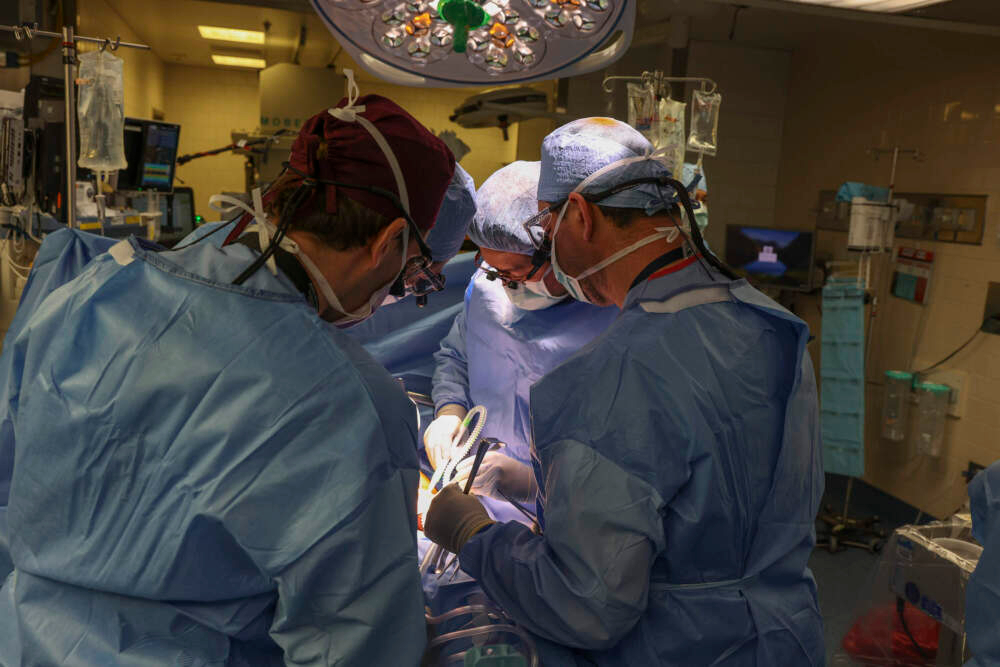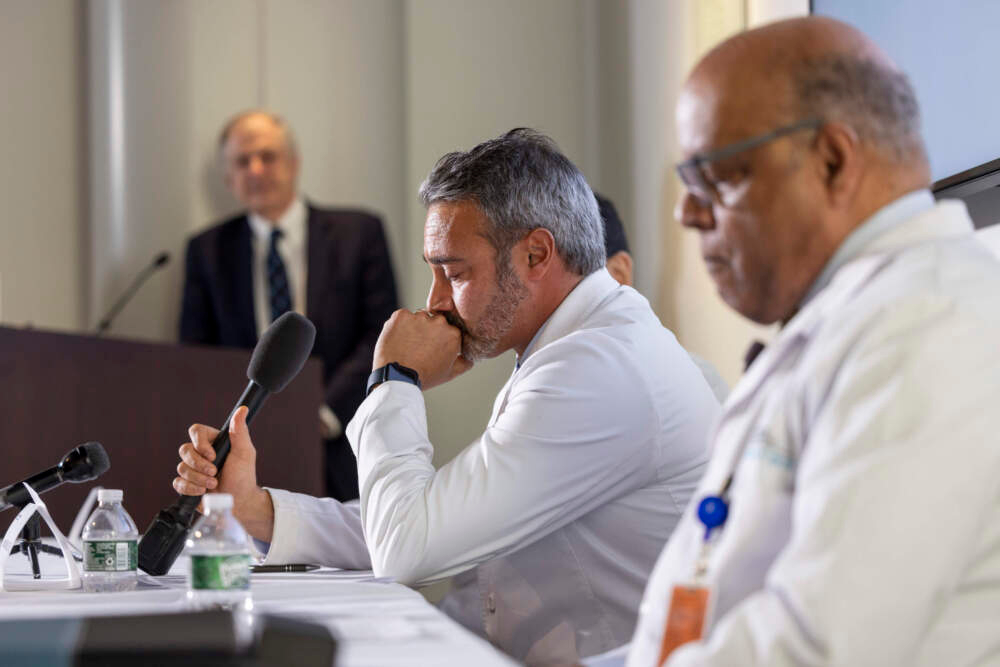The first kidney transplant was performed in 1954. It was the first human organ to be successfully transplanted. The achievement ushered in an era of hope for all those with end stage renal disease (ESRD) and the possibility of other organ transplants.

Richard Slayman of Weymouth, MA, is the first recipient of a genetically modified pig kidney. Photo credit – Mass General Hospital
The Nobel Prize Goes to a Plastic Surgeon
Dr. Joseph E. Murray won the Noble prize for Physiology or Medicine in 1990 for the first successful kidney transplantation between identical twins, between non-identical twins and from a deceased donor. He is the only Plastic Surgeon to win a Nobel Prize. All these techniques require a human donor, and unfortunately, there has been a historic paucity of human donors throughout the history of transplant surgery.
Allograft vs. Xenograft
A transplanted organ within the same species is termed an Allograft. This limits the number of transplants available for people whose kidneys have stopped working, because there is a greater need for human kidneys than availability.
Transplants between species are called Xenografts. This is why the news of the first xenotransplantation from a pig to a human provides a new era of hope for ESRD patients.
Who Gets Kidney Transplants?
The first pig to human kidney transplantation was performed one week ago on March 16, 2024. The recipient was a 62-year-old man with ESRD and so far he is doing well. As soon as the transplant was performed, the kidney immediately began doing its job — filtering the blood and producing urine. The expectation is that it will continue to do so for two more years.
Where Did the Kidney Come From?
The donor was a miniature pig, but this was no ordinary pig. It was raised by eGenesis, a company which raises Yucatan minipigs at farms in the Midwest. Using CRISPR gene editing techniques a record 69 genomic edits were made to its genome. These edits added human genes and removed harmful pig genes to help prevent rejection and prevent the transmission of pig viruses. The result is a kidney relatively compatible with humans. Currently the donor pigs are cloned, but the hope is that in the future they could breed.
New Treatment. New Problems?
While this is exciting news for dialysis patients, there are still many concerns. Many new technologies offer the promise of success; however, not all of the problems are yet known as this has never been done before and the science, while hopeful, is still unproven.
The Transplant Surgery
The surgery itself is relatively simple. The procedure was performed at Massachusetts General Hospital. The patient, Richard Slayman, is a Massachusetts resident who has long standing diabetes, high blood pressure and chronic renal failure. He was on dialysis for seven years and had previously received a human kidney in 2018. When the organ failed, he returned to dialysis.
What’s Wrong With Dialysis?

Transplant surgeons Dr. Winfred Williams and Dr. Leonardo Riella were emotional after they performed the first pig to human kidney xenograft. – Photo credit – Mass General Hospital
Dialysis is time consuming and exhausting. Most patients require three treatments a week, each lasting three to four hours and a feeling of exhaustion which least several hours after completion. The procedure requires “vascular access,” which requires surgery and maintenance operation to maintain.
After Seven Years, Mr. Slayman Was Ready for a Change
Unfortunately, the formation of blood clots frequently complicated Mr. Slayman’s dialysis. The clots blocked his dialysis access and required a series of surgeries to continue repeatedly his access. While not unusual for dialysis patients, it was becoming unbearable for Mr. Slayman. He was not sure he could go on. When asked about the decision to undergo this untested treatment Mr. Slayman responded, “I saw it not only as a way to help me but a way to provide hope for the thousands of people who need a transplant to survive.”
Good Health Mr. Slayman
Mr. Slayman is correct. More than 100,000 are on the waiting list for organ transplantation, Moreover, many people die before an organ becomes available. If young healthy kidneys were available, patients could untether from dialysis and get back to life. Good luck Mr. Slayman. We are all routing for you.
Previous Post Next Post